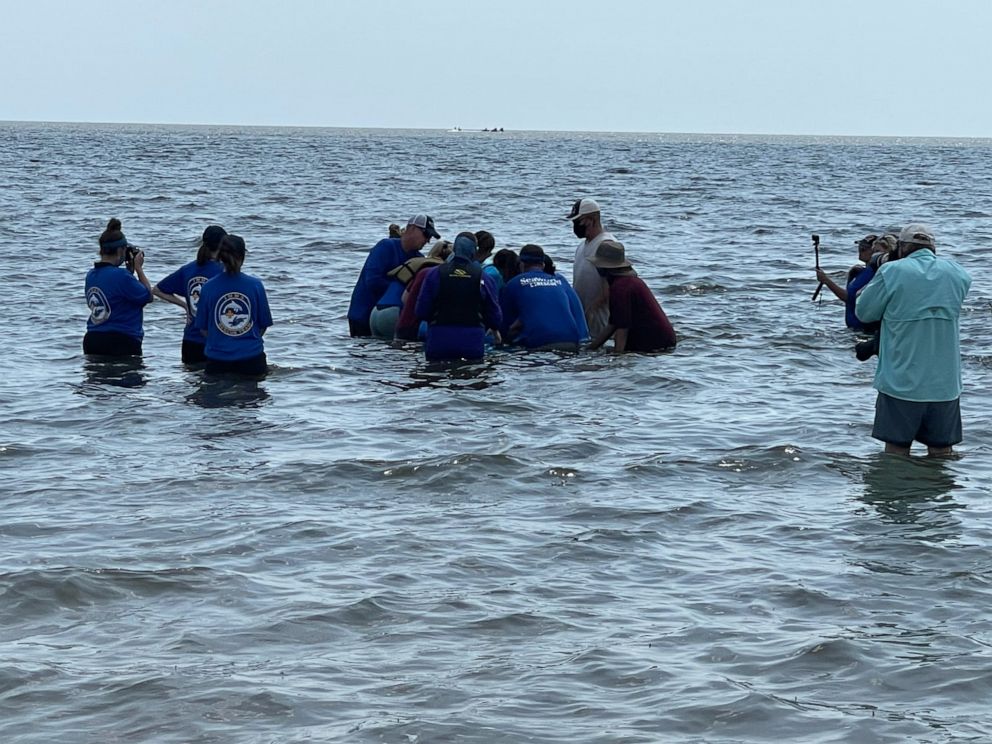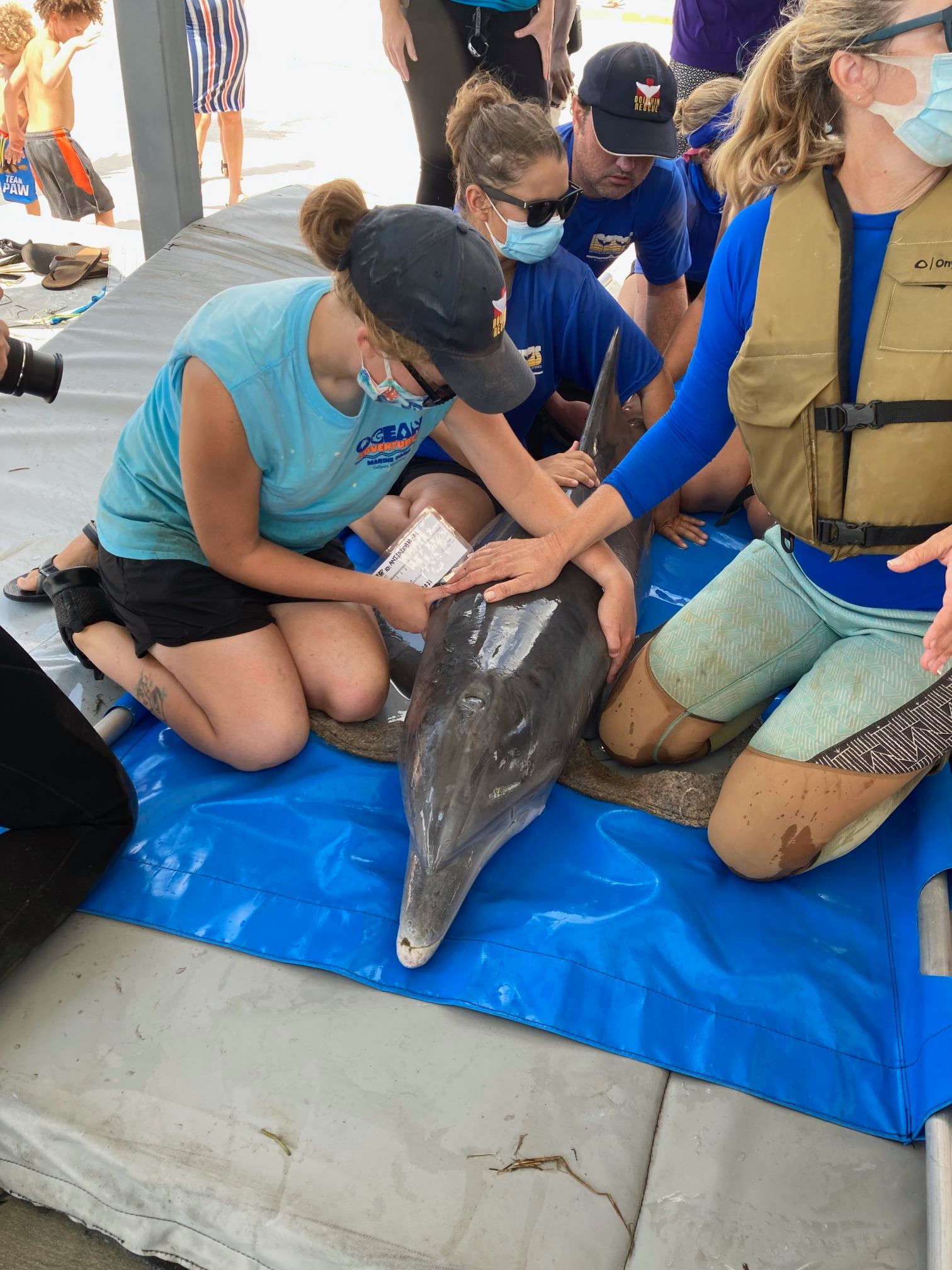Dolphin rescued from Louisiana pond after being stranded by Ida
The dolphin was released back to the ocean in hope he will rejoin his pod.
As Louisiana residents began to survey the damage left by Hurricane Ida, they saw something they did not expect: a bottlenose dolphin in the middle of a residential retention pond.
Authorities and wildlife officials near Slidell, Louisiana, began receiving reports of dolphin sightings after the heavy winds and torrential rain finally passed on Aug. 30, the day after the dangerous Category 4 hurricane made landfall in the state, sending storm surge over a foot tall from the Gulf of Mexico to nearby communities. Residents, dealing with no power or available gasoline for miles, were watching the dolphin pop in and out of the pond's surface, Jon Peterson, vice president of SeaWorld Orlando's zoological operations, told ABC News.
The dolphin, a male juvenile, likely came in through Lake Pontchartrain, an estuary in Louisiana connected to the Gulf of Mexico, and was pushed by the hurricane into a canal that led to the retention pond, Moby Solangi, director of the Institute for Marine Mammals Studies in Gulfport, Mississippi, told ABC News. Once the storm surge began to recede, the dolphin became stuck in the pond, Solangi said.
The pond, which is typically only 4 to 6 feet deep, is located in a residential area on a busy road, so the public had a clear view of the dolphin, Peterson said.

Biologists were worried about the lack of salinity, dirty water due to lack of a filtration cycle, 90-degree water, which is much warmer than the dolphins are used to in open seas, and other contaminants that could pose a risk to the dolphin's health, Peterson said.
Several agencies, which also included the National Oceanic and Atmospheric Administration Fisheries Service, the Audubon Nature Institute and several local authorities, planned the extraction for days. It was initially scheduled for Tuesday but was moved up once biologists started noticing lesions on the dolphin's skin, caused by the freshwater.
"And then those lesions become the entry point for viruses, bacteria," Solangi said.
Once the rescuers were able to get to the scene, they studied the dolphin to see whether he liked to stay in a certain area, Peterson said. Typically, dolphins prefer the deepest waters, so the crews had to lure it away from that area to increase their visibility of the animal, he added.
On Sunday, the rescuers were able to deploy a series of nets from a kayak to trap the dolphin, more than six days after it was trapped in the pond, Peterson said.
The dolphin was then examined by a team of veterinarians, tagged and placed in a transport truck before it was released into the Gulf of Mexico.
Based on the dolphin's length, nearly 6 feet, it is likely still so young that it is still dependent on its mother and was part of a pod, Solangi said. It is unclear if the dolphin ate while it was in the pond, and the next step will be to track the dolphin to see if it is able to reunite with its group, he added.
Other than the freshwater lesions, the dolphin seemed to be in decent physical shape, Peterson said.

While it is typical for wildlife to become displaced after large storms, the rescues tend to occur in rural areas, Peterson said. This event occurred in a suburban city and was met with fanfare, with up to 100 bystanders surrounding the pond, applauding as rescuers completed their efforts, Peterson said.
Peterson reminded the public to never try to handle wildlife themselves, even if they think they are being helpful.
"The rule of thumb is watch from a distance," he said. "If you're not sure if it needs help, call the right people, and they'll assist you and let you know."




